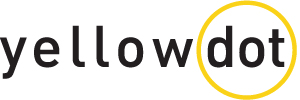LinkedIn is the biggest meeting place for business thought leaders on the planet. Everyone from Fortune 500 executives to small business owners and rising middle managers can be found on LinkedIn.
Given that it is the largest social network for professionals, it still surprises me that most marketers haven’t yet discovered how to tap the power of LinkedIn. LinkedIn can dramatically accelerate the process of finding and connecting with qualified leads – decision-makers who are not only amenable to your offer, but who also have the power to make a purchase “on the spot.”
Laying the groundwork for LinkedIn prospecting is easier than it might seem. As with so many things, it means consistently investing your time and effort in the right things at the right time. Once the initial work is done, the benefits become easier and easier to maintain.
Here are the four LinkedIn fundamentals so many marketers overlook:
1) Have a Great Profile
Everything on LinkedIn starts with a well-written, reader-focused profile. As with any marketing message, you want to communicate the value you can add to a prospect’s life as quickly and clearly as possible. Lead with a punchy intro that motivates the reader to learn more … then, take the time to fill out every section of your profile, including job history.
Having a complete, coherent, yet concise profile separates you from the spammers who try to exploit LinkedIn without adding anything in return. Prospects will often judge you with a 30-second glance at your profile, and a sparse one makes you an unknown risk. Plus, adding things like education and volunteer experience creates new opportunities to connect with others.
As with any social media, skipping a profile photo is an immediate “red flag.” LinkedIn’s default photo is the standard silhouette that’s associated with so much superfluous chatter online. A recent, well-lit, professional photo – with a neutral background and an appropriate smile – is the fastest way to make a real, human connection before you even have to say a word.
2) Create a Prospect Brief
A brief is essential when prospecting on any social media. It’s especially important when connecting with decision-makers who measure the ROI of an interaction in minutes and want to know instantly whether engaging with you will be worthwhile. Your brief should be built on the best buyer persona information you have and offer compelling statements of value. Know your prospect’s pain points!
Oversharing material in your brief early is a surefire way to be seen as desperate. Your profile and initial contact should provide clear outlines of the unique value proposition without going into gritty details until you’re engaged in conversation with your prospect. A brief also helps you standardize your approach and track results from your prospecting efforts so you can continuously improve.
3) Start the Conversation – Make the Right Connections
LinkedIn gives you plenty of ways to warm your prospects and make connections before contacting them directly. One of the most important of these is LinkedIn Groups. Groups are based around shared interests or affiliations, providing points of contact between you and your prospects. Participating in Groups helps show others the insight and expertise you offer.
LinkedIn limits the number of direct messages – InMails – you can send to people not directly connected to you. To conserve resources and appear more authentic, look for ways to be introduced by a connection you share with your prospect. With this approach, you “come recommended” and have the opportunity to leverage a colleague’s reputation and authority.
Experts estimate an InMail message is 30x more likely to get a response than a traditional cold call. Still, you should reserve them for the members of an enterprise who have a clear stake in your offer and the buying authority to see it through. Use email marketing fundamentals like an enticing subject, clear value proposal, and a “call to action” asking the prospect to connect with you directly.
4) Use “Advanced Search” to Your Advantage
LinkedIn’s Advanced Search is one of the most powerful tools in your arsenal for micro-targeting your offers to the prospects most likely to respond. Even a free account can be used for a granular search that includes geography, professional role, and industry.
The keys to a powerful Advanced Search are:
- Keywords: Keywords help you specify prospects’ areas of influence even when they aren’t clear from professional title. Use quotation marks to ensure a full phrase appears in every prospect’s profile: For example, “content management” will be treated as a phrase. Boolean expressions like “and” and “or” can be used as well: “Content management” AND “Web design” is a valid search for two phrases that both have to appear in each profile.
- Postal Code: If your search should be refined by geography, you can use the Postal Code field to specify an area. For an approach that’s more granular, but still very targeted, use the drop-down menu marked “Within.” This lets you search for prospects within a radius of the zip code you specified. A larger radius helps with searches that use very specific keywords, while a smaller one makes results more precise.
- Relationship: When prospecting, always select “2nd Connections,” “Group Members,” and “3rd + Everyone Else.” This ensures your search isn’t cluttered with “1st-level” direct connections, and keeps your closest colleagues insulated from marketing communication. After all, you could just call or meet with them!
Once you’ve designed your advanced search, you have the opportunity to save it. A free account can save up to three searches, while the premium account tiers allow you to save more. It’s a good idea to save the searches you’ve found most effective so you can return to them in the future without having to re-create them from scratch.
LinkedIn can provide hundreds of targeted prospects per week. Once you’ve got your searches developed and saved, you’ll get weekly updates from LinkedIn as new members arrive who meet your search criteria. As existing members update their profiles, their matches will also be delivered directly to your inbox.
Key Takeaway
Putting these four techniques together, you can easily create a LinkedIn prospecting system that requires only a few hours a week to generate great value for your business. Plus, higher visibility on this important business network will add more credibility to your offers now and in the future.

